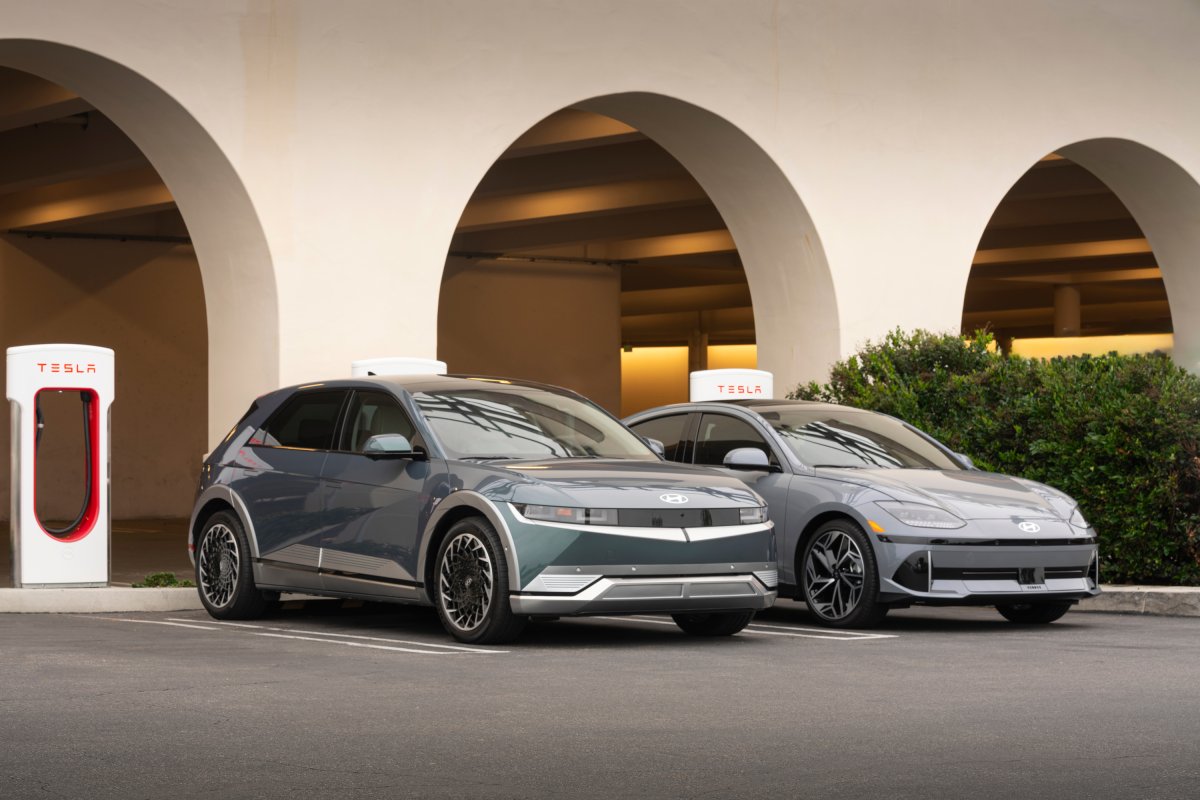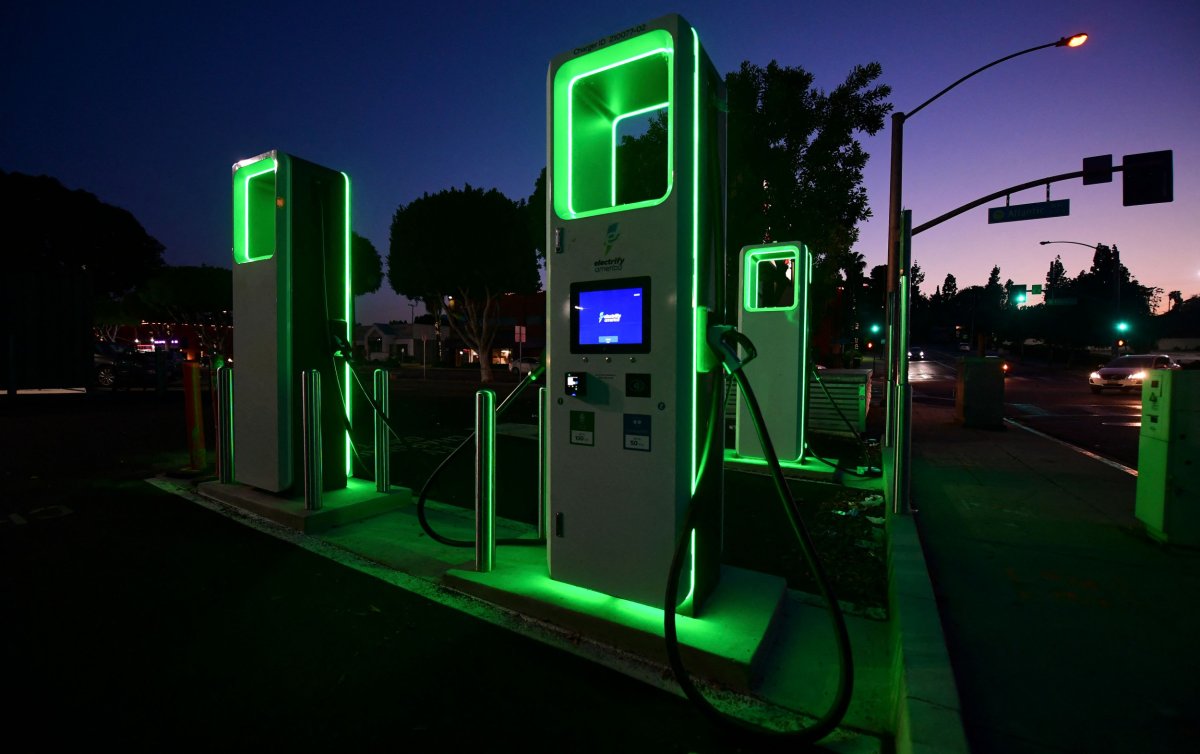Standards help streamline life. They ensure that nutrition labels are on food, tap water is drinkable, and electrical sockets are all the same voltage within a country.
The auto industry is not immune to standards. Several regulating bodies, including the National Highway Traffic Safety Administration (NHTSA) and Federal Highway Administration (FHWA) are working to standardize how public charges its electric vehicles (EVs) in the same way gas stations and gas pumps are standardized.
The National Electric Vehicle Infrastructure Standards and Requirements is a series of rules made by the FWHA initiated by the Bipartisan Infrastructure Law. It's one part of the equation.
The Society of Automotive Engineers, SAE, also sets standards. The organization works with current and emerging technologies to create non-binding rule making across the globe.
"Typically, a lot of standards start off at the very conceptual stage where experts basically say, 'Well, how do we want this to work?' So, you start with a blank piece of paper and you get some proposals. And then you coalesce on a single sort of solution, and that process typically takes some time because you're creating something where there was nothing before, or there were things before but they were different, had different requirements," Dr. Rodney McGee, PH.D., P.E. said in the SAE podcast Tomorrow Today.

"The next standardization process is a bit different in that the North American Charging Standard (NACS) connector represents both a majority of use on full electric vehicles and also a huge market share of charging stations, especially DC charging stations. What we're going to be doing in the standard is really capturing the existing mechanical connector to make sure that when other manufacturers want to be interoperable with it, they have a standard to follow that will ensure that things work well," said McGee.
As of August 15, companies that have manufactured more than 75 percent of the EVs on the road today have committed to NACS adoption. Fisker, Ford, General Motors, Honda, Hyundai Motor Group, Jaguar Land Rover, Mercedes-Benz, Nissan, Polestar, Rivian, and Volvo have all said that they will either install NACS charging ports on their vehicles or offer an adapter to work with Combined Charging Solutions (CCS) chargers.
The NACS charger, formerly called the Tesla charger, was created by Elon Musk's car company to be used only at its Supercharger stations. It's lighter and easier to use than the CCS charger.
The Supercharger network is known for its cross-country route enablement, as opposed to other networks, which have concentrated on installing chargers in more urban areas. Electrify America, however, does have current routes that stretch across the country as well.
In February, Tesla began installing its Magic Dock NACS to CCS adapter at some Supercharger locations. When a NACS-equipped vehicle driver wants to use the charger, they remove the adapter; when a CCS vehicle, like a Ford Mustang Mach-E or Kia EV6, the Magic Dock releases the NACS to CCS adapter.

Automakers like Ford, Nissan and GM that have promised the NACS connector usability by 2025 and will offer buyers an adapter at purchase so they can use the Tesla chargers. It's expected most of the other automakers will do something similar. Elon Musk, when talking to Ford CEO Jim Farley on X, formerly Twitter, said that the adapters wouldn't be cost prohibitive, "maybe a few hundred bucks."
Electrify America, a public charger company that serves all electric vehicles including Teslas, has already announced plans to add the NACS connector by 2025 as well as continuing to support the CCS. The technology behind the chargers doesn't need to change, just the connector, Electrify America says.
There is one hiccup. Some older EVs, which are coming to the used market now, use a third form of connector called CHAdeMO. It's mostly found on Japanese cars such as the Nissan Leaf, older Toyota Prius Plug-In hybrid and Mitsubishi Outlander PHEV. It's still installed from the factory on the Leaf.
A new generation of the Leaf, which uses modern charging technology, is expected in the near future.

In 2021, charger company Electrify America said it would phase out CHAdeMo connectors except for in California, however, there are still almost 10,000 working CHAdeMO chargers in North America.
"The EV charging industry is still in its early stages. It is going to take a collective effort from all players to scale and meet the growing demand. This will strengthen the national charging infrastructure and improve the EV ownership experience," an Electrify America representative told Newsweek.
While public charging station use may become more of an obstacle for older model EVs, owners remain able to continue to charge at home or other locations using a traditional charging cord.
"Our data shows that there is a considerable lack of available public charging in the U.S. Whether you're talking NACS or CCS, there simply aren't enough chargers. Now with Tesla's Supercharger network that has been a significant advantage for owners of its vehicles. They have greater availability, reliability and more satisfying experience. This advantage has generated a purchase differentiator for Tesla – 57 percent of Tesla owners cite the number of chargers which are compatible with brand's vehicles as a key reason for purchase," Brent Gruber, Executive Director, Electric Vehicle Practice at J.D. Power told Newsweek.
"For non-Tesla owners, only 2 percent cite charger compatibility as a key purchase reason. With wider adoption of NACS, I don't know that the OEMs view Tesla as a "winner", but rather view non-Tesla EV owners as winning in this scenario. Access to a greater number of public fast chargers for non-Tesla owners helps to partially address the key issue of availability, but whether or not the high performing Tesla charging experience can be replicated for non-Tesla owners remains to be seen," said Gruber.
Uncommon Knowledge
Newsweek is committed to challenging conventional wisdom and finding connections in the search for common ground.
Newsweek is committed to challenging conventional wisdom and finding connections in the search for common ground.
About the writer
Jake Lingeman is the Managing Editor for the Autos team at Newsweek. He has previously worked for Autoweek, The Detroit ... Read more





